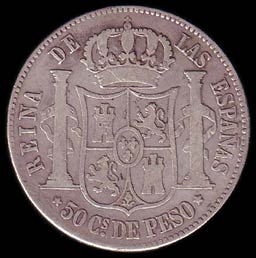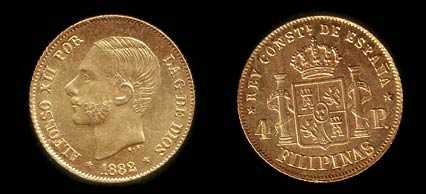Something About Tumbo (Cara y Cruz): A Hypothesis
They say that mahjong is just a diversion, a recreation of some sort of the bored and the retired. But they say that cara y cruz is a different case. However you look at it--in both sides of the coin (pun intended), it is gambling and therefore those who indulged in it (read, the poor ones) are playing in conflict with law. And so, since yesteryears, people accepted those facts. Mahjong is recreational while cara y cruz or tumbo is gambling and illegal at that.
Now those really are alien to most of us Baleten-ons. We use the word "tumbo" to mean the same game which involves three coins of the same kind being tossed up in the air while the bettors hope luck are on their side; that once settled on the ground, all the three coins would show up as either "hari" or "corona" (king or crown), even if the coins they use are the Bagong Lipunan or the post EDSA ones. Its variant is called "paya" involving only one coin either tossed up or made to "dance" on the floor then covered with a hat for the bettors to guess which side settled top over the other.
Those are not really contrary with the other. One has to find the link, the derivative so to speak and things will fall in their proper perspective. "Tumbo" is also a Spanish word corrupted by the Visayan speaking people. It means "tumble" or "fall" while the "hari" is Filipino for "king" and the "corona" is Spanish of the word "crown". Either in Tagalog or Visayan usage, the common denominator of the game of chance is the coin itself.
Coins were however a rarity in the Spanish Philippines. It was said that the first Philippine coins were minted around 1830's when the Casa de Moneda de Manila was founded on the order of Queen Isabella II of Spain. Hammered silver coins such as the Macuquinas and the world famous "ocho reales" were however introduced in the Philippine archipelago as early as the 17th century. One wonders nevertheless when the Pinoy ingenuity came about to invent such game of chance such as "tumbo" and "paya" with the bettors betting on the coins to be either "hari" or "corona".
You wanna bet?
But I was amused at the scene of a group of individuals by an "island" at corner T.M. Kalaw and Taft Avenue I happened to pass by while doing research at the National Archives of the Philippines sometime in August 2010. I just alighted from the Light Rail Transit (LRT) at UN Station and was finding my way to cross T.M. Kalaw when I noticed a bunch of lot playing cara y cruz on the elevated concrete "island". People passing by were oblivious of them, even the policeman manning the traffic was too preoccupied to give them a look.
 |
| The Macuquinas or Hilis Kalamay bearing a cross on one side and the Spanish coat-of-arms on the other |
Now those really are alien to most of us Baleten-ons. We use the word "tumbo" to mean the same game which involves three coins of the same kind being tossed up in the air while the bettors hope luck are on their side; that once settled on the ground, all the three coins would show up as either "hari" or "corona" (king or crown), even if the coins they use are the Bagong Lipunan or the post EDSA ones. Its variant is called "paya" involving only one coin either tossed up or made to "dance" on the floor then covered with a hat for the bettors to guess which side settled top over the other.
As I traced my steps towards the Archives, I engaged my mind into some sort of mental exercise. Cara y cruz is idiomatically translated as "head or tail". Spanish words. "Cara" is "face" while "cruz" is "cross". "Y" of course is "and" so their literal translation would mean "face and cross".
 |
| The "corona" of Spanish-minted Philippine Coin (An Isabella) |
Coins were however a rarity in the Spanish Philippines. It was said that the first Philippine coins were minted around 1830's when the Casa de Moneda de Manila was founded on the order of Queen Isabella II of Spain. Hammered silver coins such as the Macuquinas and the world famous "ocho reales" were however introduced in the Philippine archipelago as early as the 17th century. One wonders nevertheless when the Pinoy ingenuity came about to invent such game of chance such as "tumbo" and "paya" with the bettors betting on the coins to be either "hari" or "corona".
You wanna bet?
You may find the links hereunder useful if you are interested in Philippine coinage:
http://www.bohol.ph/article110.html
http://kahimyang.info/kauswagan/General-Blogs.xhtml?b=728
http://www.bohol.ph/article110.html
http://kahimyang.info/kauswagan/General-Blogs.xhtml?b=728



Comments
Post a Comment